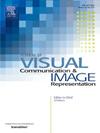基于变形金刚的弱监督三维人体姿态估计
IF 2.6
4区 计算机科学
Q2 COMPUTER SCIENCE, INFORMATION SYSTEMS
Journal of Visual Communication and Image Representation
Pub Date : 2025-03-14
DOI:10.1016/j.jvcir.2025.104432
引用次数: 0
摘要
基于深度学习的三维人体姿态估计方法通常需要大量的三维姿态注释。然而,由于数据质量的限制和三维标注数据的稀缺性,研究人员采用了弱监督方法来减少对标注数据的需求。与传统方法相比,变形金刚最近在三维人体姿态估计方面取得了显著的成功。利用其强大的建模和泛化功能,transformer即使在有限的数据条件下也能有效地捕获数据中的模式和特征,从而减轻了数据稀缺的问题。尽管如此,当处理时空特征时,Transformer架构很难捕获关节之间的长期依赖关系和时空相关性,这限制了它全面建模时空关系的能力。为了应对这些挑战,并在弱监督下更好地利用有限的标记数据,我们提出了一种改进的基于transformer的模型。通过将关节按身体部位分组,增强了关节间的时空相关性。此外,LSTM的集成捕获了长期依赖关系,改进了时间序列建模,并能够从有限的数据中生成准确的3D姿态。这些结构改进与弱监督策略相结合,增强了模型的性能,同时减少了对大量3D注释的依赖。此外,采用多假设策略和时间平滑一致性约束来调节相邻时间步长之间的变化。对Human3.6M和HumanEva数据集的比较验证了我们方法的有效性。本文章由计算机程序翻译,如有差异,请以英文原文为准。
Transformer-based weakly supervised 3D human pose estimation
Deep learning-based 3D human pose estimation methods typically require large amounts of 3D pose annotations. However, due to limitations in data quality and the scarcity of 3D labeled data, researchers have adopted weak supervision methods to reduce the demand for annotated data. Compared to traditional approaches, Transformers have recently achieved remarkable success in 3D human pose estimation. Leveraging their powerful modeling and generalization capabilities, Transformers effectively capture patterns and features in the data, even under limited data conditions, mitigating the issue of data scarcity. Nonetheless, the Transformer architecture struggles to capture long-term dependencies and spatio-temporal correlations between joints when processing spatio-temporal features, which limits its ability to model temporal and spatial relationships comprehensively. To address these challenges and better utilize limited labeled data under weak supervision, we proposed an improved Transformer-based model. By grouping joints according to body parts, we enhanced the spatio-temporal correlations between joints. Additionally, the integration of LSTM captures long-term dependencies, improving temporal sequence modeling and enabling the generation of accurate 3D poses from limited data. These structural improvements, combined with weak supervision strategies, enhance the model’s performance while reducing the reliance on extensive 3D annotations. Furthermore, a multi-hypothesis strategy and temporal smoothness consistency constraints were employed to regulate variations between adjacent time steps. Comparisons on the Human3.6M and HumanEva datasets validate the effectiveness of our approach.
求助全文
通过发布文献求助,成功后即可免费获取论文全文。
去求助
来源期刊

Journal of Visual Communication and Image Representation
工程技术-计算机:软件工程
CiteScore
5.40
自引率
11.50%
发文量
188
审稿时长
9.9 months
期刊介绍:
The Journal of Visual Communication and Image Representation publishes papers on state-of-the-art visual communication and image representation, with emphasis on novel technologies and theoretical work in this multidisciplinary area of pure and applied research. The field of visual communication and image representation is considered in its broadest sense and covers both digital and analog aspects as well as processing and communication in biological visual systems.
 求助内容:
求助内容: 应助结果提醒方式:
应助结果提醒方式:


